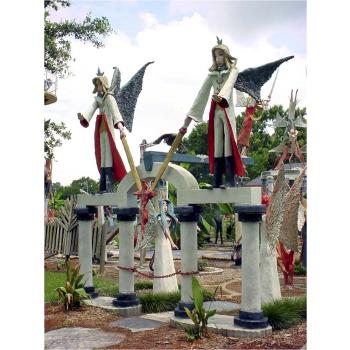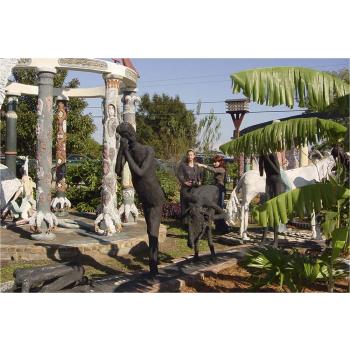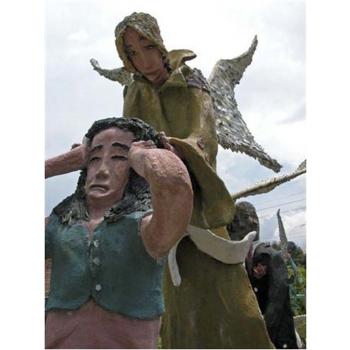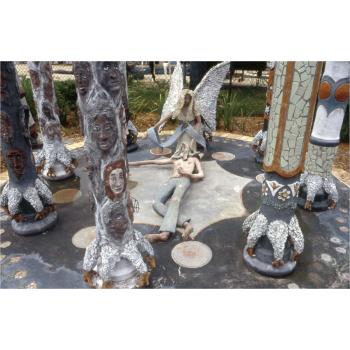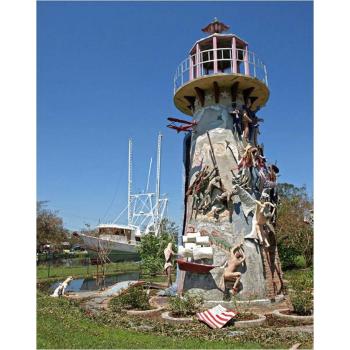Chauvin Sculpture Environment
Little is known about the reclusive Kenny Hill, a bricklayer by trade, who was born around 1950. In 1988, he settled on some property on the bayou in Chauvin (pronounced show-van), Louisiana — population 3,400. Hill pitched a tent as his home and, over time, built a small rustic home that demonstrated an interesting use of space and attention to detail. Then, in 1990, without explanation, he began transforming his lush bayou environment into a fantastic chronicle of the world as seen through his eyes.
Less than a decade later, more than 100 primarily religious concrete sculptures densely packed the narrow, bayou-side property. The sculptures are a profound mixture of Biblical reference, Cajun colors, and the evident pain and struggle of the artist’s life. Most are guided, supported, or lifted by seemingly weightless angels — black, white, male, female, baby, or soldier. The angels, each unique, some inviting passage, others prohibiting, vary from blue skinned, bare-footed, and sightless to regal angels clad in medieval garb with the black boots of the local shrimp fishermen.
The most prominent piece is a 45-foot-tall lighthouse, composed of 7,000 bricks, with figures clinging to the outside: cowboys, soldiers, angels, God, and Hill himself. A walk through this sculpture environment is an emotional experience, evoking a sense of deep spirituality but also personal pain.
Hill placed himself in many of the scenes: he rides a horse; carries Christ’s cross; stands with long hair and a beard, his heart bleeding; and shows his face painted half black and white, suggesting the artist’s struggle between good and evil.
During the ten-plus years he lived on the property and created his art, he was adamant that the work was just for him — he felt no need to share it. Hill repeatedly denied requests for access to photograph or publicize his work but reportedly declared it a “story of salvation” for the local residents.
Neighbors have created a picture of Hill as a man who, by the time he abandoned his art in early January 2000, was deeply troubled and left not only his art and his home, but also abandoned the religion that had come to dominate his life. Evicted by the parish for not keeping the grass and weeds under control, Hill disappeared on foot.
The site has been gifted to nearby Nicholls State University in Thibodaux, Louisiana. When former NSU Art Professor Dennis Sipiorski tried to prompt Hill to expound on the site’s meaning by asking, “Is this your vision?” Hill replied, “It’s about living and life and everything I’ve learned.”
In 2002 the site was officially opened to the public with the dedication of the new Nicholls State University Folk Art Studio, a gift of Kohler Foundation. For information or to arrange a tour of the site, call the NSU Folk Art Studio at 985-594-2546.
